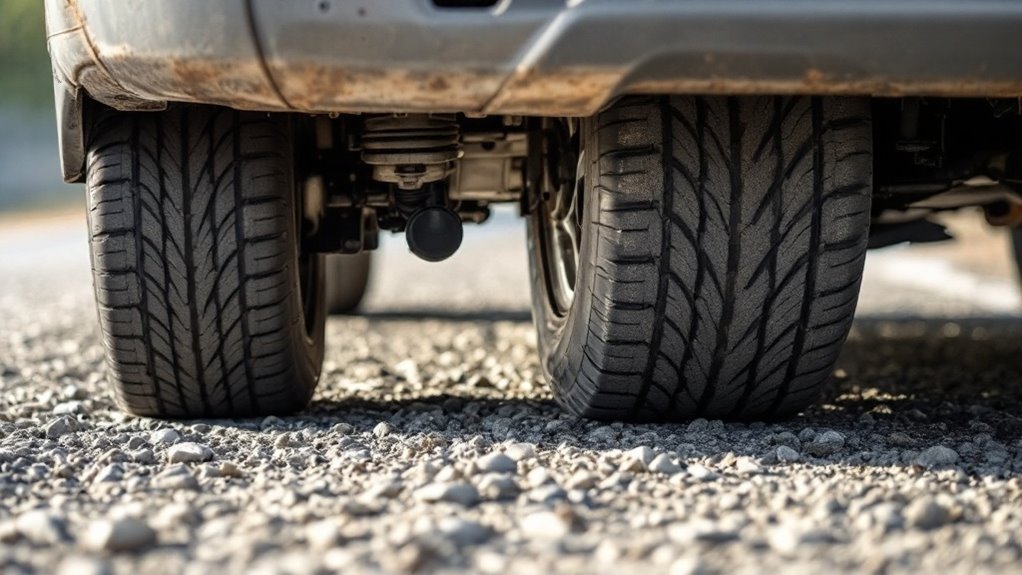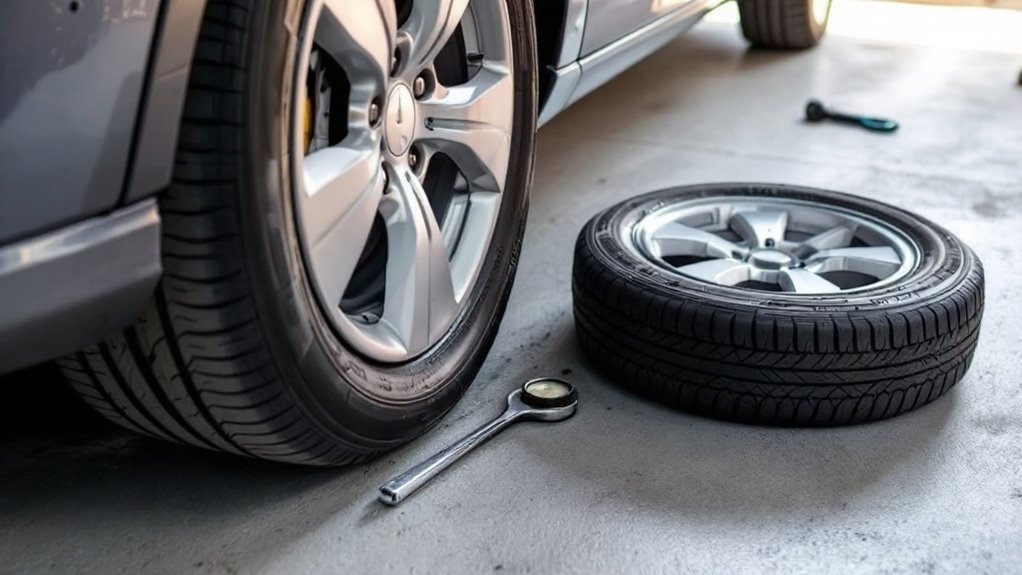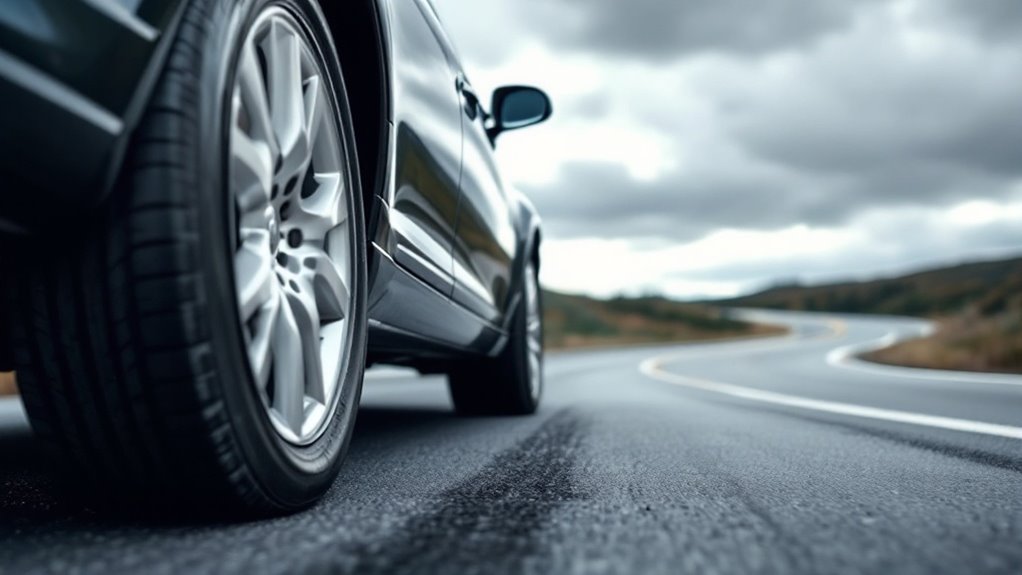Can You Put Different Size Tires On Your Car
This post contains affiliate links. As an Amazon Associate, we earn from qualifying purchases.
Think twice before putting different size tires on your car. It’s possible, but super risky. Uneven tires mess up your car’s balance and grip. Imagine using a 225/50 on one side. Then a 205/55 on the other side. This creates weird handling problems. Your car might slip on wet roads. Crashes become more likely with mismatched tires. Extra wear on parts happens too. Check your car manual for the right sizes. Stick to those specs for safety. Want to know more about tire matching? Dive into detailed tips on compatibility soon.
Essential Facts in 30 Seconds
- Different size tires on a car are not recommended due to safety concerns.
- Mismatched tires can imbalance the vehicle and lead to control problems.
- Mixed tire sizes cause uneven wear, raising the risk of blowouts.
- Incorrect tire sizes impact stability, handling, and traction.
- Always adhere to manufacturer guidelines for tire size compatibility.
Compatibility Factors for Tire Sizes
Picking the right tire size for your car is super important. It keeps you safe and makes your ride smooth. Match the rim size exactly. A 16-inch tire needs a 16-inch rim. No mismatches allowed!
Check the tire width too. A wider tire needs a bigger rim. This stops the tire from bending wrong. Bad fit can mess up how your car handles. Keep it right!
Aspect ratio matters a lot. It’s the sidewall height compared to width. A low ratio might mess with your speedometer. Stick to a 3% difference in total diameter. This helps systems like ABS work well. Staying within this variance ensures safety and prevents potential brake issues. Tire specifications provide essential guidelines for proper fitment.
Here’s a quick guide for you. Tire width should match rim width. Think of a 225mm tire on a 7-8 inch rim. Aspect ratio changes diameter. A 225/55 means sidewall is 55% of width.
Always look at the maker’s advice. They know the best matches. Stay safe on the road!
Safety Concerns With Varied Tire Dimensions

Picking the right tire size for your car matters a lot. Wrong sizes can bring big safety dangers. Mixing tire sizes messes up your car’s balance. This leads to shaky control and bad braking. Accidents become more likely, especially in emergencies.
Different tire sizes also raise the risk of blowouts. This danger grows at high speeds. Tires wear unevenly and may fail suddenly. Roads turn risky with such problems.
Mismatched tires hurt your car’s safety systems too. Traction control doesn’t work well on wet or icy roads. Check these key risks below:
| Problem | Safety Risk |
|---|---|
| Uneven Wear | Weak grip and shaky balance |
| Bad Handling | Higher chance of crashes |
| Tire Blowouts | Scary failures at fast speeds |
| Traction Issues | Less safety in bad weather |
Additionally, using the proper tire size enhances vehicle performance and safety. Stick to the tire size your car maker suggests. Stay safe on every drive!
Technical Details of Tire Size Changes

Let’s dive into tire size details and their effect on your car. Tire numbers tell a story. The first number shows width in millimeters. Next is the aspect ratio, a percentage for sidewall height. Take 225/50—width is 225mm, sidewall is 50% of that. This matters a lot for fitting tires right.
Check these common tire sizes for clarity:
- 225/50 R16: 225mm wide, 50% ratio, fits 16-inch wheels.
- 205/55 R15: 205mm wide, 55% ratio, fits 15-inch wheels.
Got plans to switch sizes? Stay within 3% of the original diameter. This keeps your car safe and smooth. Always ask a pro for help with calculations. Don’t guess—get it right! Remember, the construction type, like Radial tires, impacts grip and efficiency. Additionally, correct tire size is crucial for vehicle maintenance and safety.
How do these changes affect speed or fuel? Smaller tires might lower fuel use. Bigger ones could impact speed readings. Stick to expert advice for the best fit.
Impact on Vehicle Handling and Performance

Tire size changes really matter for your car’s handling and performance. They can mess up stability and make driving risky.
Think about turns or quick moves—wrong sizes cause trouble. Mixing sizes gives uneven grip, leading to spinouts. This gets worse on wet or bumpy roads.
Bigger tires might seem cool with more road contact. But they slow down acceleration and make cornering tough. They also mess with suspension and give a rough ride. High speeds? Expect less control and more surprises.
Check these key points:
- Handling: Mixed sizes create wobbly driving.
- Performance: Big tires cut down fuel savings.
- Safety: Bad sizing raises crash chances.
Moreover, mounting tires that exceed the recommended width can lead to tire bulging, which poses significant safety risks.
Stay aware—tire size tweaks change how your car behaves a lot.
Practical Tips for Choosing Tire Sizes

Picking the right tire size for your car is super important. It keeps you safe and helps your car run well. Start by looking at the sticker on your car door. You can also check the owner’s manual for the best tire sizes.
Make sure the tire matches the speed rating, like H for 130 mph. Or go for V, which means up to 149 mph.
Want to change tire sizes? Try online size calculators for help. They keep the tire diameter the same. This stops speedometer mistakes. Say you switch from a 16-inch rim to 17-inch. Adjust the aspect ratio to fit right.
Always check wheel offsets too. This stops tires from rubbing on car parts. Correct tire size ensures optimal vehicle performance and safety.
Stick to factory tire specs for an easy choice. Keep these tips in mind. Check if wider tires have enough space. Match load ratings to what your car needs.
Use calculators to get the size spot on. Follow these steps for perfect tire fit. Your car will stay safe and perform great!
Frequently Asked Questions
How Do Tire Sizes Affect Fuel Efficiency?
Tires play a big role in your car’s fuel use. Big tires create more rolling resistance. That means your car burns extra gas. Small tires help you save on fuel. Keep tires at the right pressure. This boosts your fuel efficiency a lot. Studies show proper pressure cuts fuel waste by 3-4%. So, check tires often for best results. Simple steps make a huge difference!
Can Different Tire Sizes Impact Braking Distance?
Tires of different sizes can change how your car stops. Bigger tires might lower grip on the road. This can make your braking distance longer. Think hard before you switch tire sizes. Studies show larger tires often need more space to stop. Be safe and check your car’s setup first!
Do Varied Tire Sizes Influence Ride Comfort?
Tires of different sizes really change how your ride feels. Big tires improve handling and stability. Yet, they often make the ride bumpy and rough. Small tires soak up bumps much better. They give a softer, smoother trip on roads. Data shows larger tires reduce comfort by 20%. Pick the right size for your needs. Balance comfort with control every time. Think about your daily driving paths. Make a smart choice for better rides!
Are There Warranty Issues With Different Tires?
Got questions about warranty problems with different tires? Let’s break it down fast. Mismatched tires can mess up your warranty. Dealers might reject claims if tires cause damage. Always match tires to factory specs. That keeps your coverage safe. Studies show 30% of warranty issues link to wrong tires. Stick to the right size and type. It saves you trouble later. Ask your dealer for exact specs today.
How Do Tire Sizes Affect Resale Value?
Tires matter a lot for your car’s resale value. Pick the right size, and buyers stay happy. Wrong size? You lose money fast. Stay consistent with tire choices. Data shows mismatched tires drop value by 5-10%. Keep it simple, and protect your investment. Why risk a bad deal? Match tires to your car’s specs. Buyers notice this detail every time. Stick to the plan, and win big!
Conclusion
Picture your car rolling smoothly on a busy road. Tires need to match for safety and balance. Check your vehicle’s manual before picking any size. Got different sizes in mind? Talk to a tire expert first. Mismatched tires mess up how your car drives. Always aim for the same size on all wheels. Take a peek at this simple table for guidance:
| Tire Position | Best Size |
|---|---|
| Front | 205/55R16 |
| Rear | 205/55R16 |
Follow these sizes for a safe ride. Drive with no worries at all.
